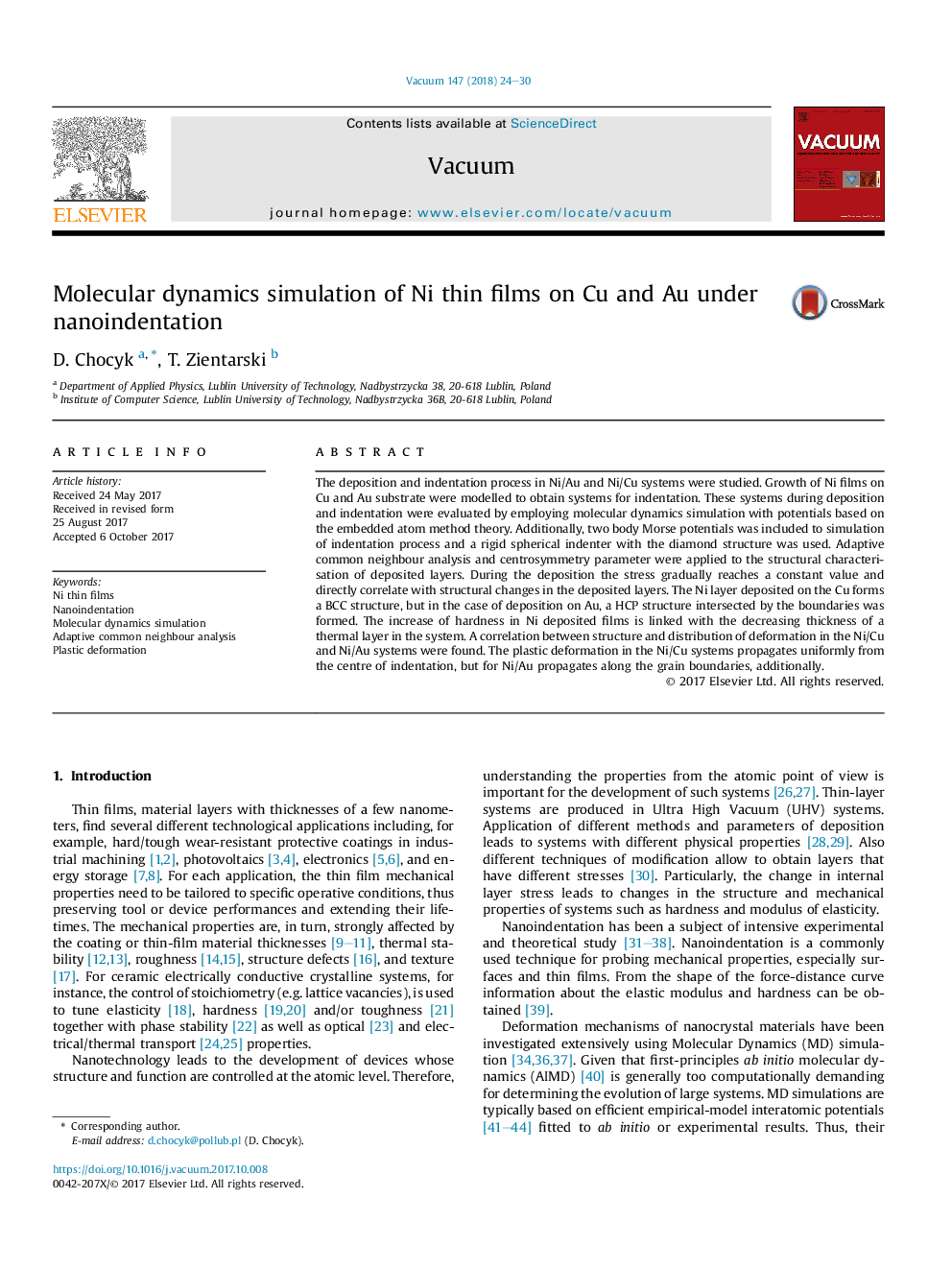| Article ID | Journal | Published Year | Pages | File Type |
|---|---|---|---|---|
| 5467958 | Vacuum | 2018 | 7 Pages |
Abstract
The deposition and indentation process in Ni/Au and Ni/Cu systems were studied. Growth of Ni films on Cu and Au substrate were modelled to obtain systems for indentation. These systems during deposition and indentation were evaluated by employing molecular dynamics simulation with potentials based on the embedded atom method theory. Additionally, two body Morse potentials was included to simulation of indentation process and a rigid spherical indenter with the diamond structure was used. Adaptive common neighbour analysis and centrosymmetry parameter were applied to the structural characterisation of deposited layers. During the deposition the stress gradually reaches a constant value and directly correlate with structural changes in the deposited layers. The Ni layer deposited on the Cu forms a BCC structure, but in the case of deposition on Au, a HCP structure intersected by the boundaries was formed. The increase of hardness in Ni deposited films is linked with the decreasing thickness of a thermal layer in the system. A correlation between structure and distribution of deformation in the Ni/Cu and Ni/Au systems were found. The plastic deformation in the Ni/Cu systems propagates uniformly from the centre of indentation, but for Ni/Au propagates along the grain boundaries, additionally.
Related Topics
Physical Sciences and Engineering
Materials Science
Surfaces, Coatings and Films
Authors
D. Chocyk, T. Zientarski,
